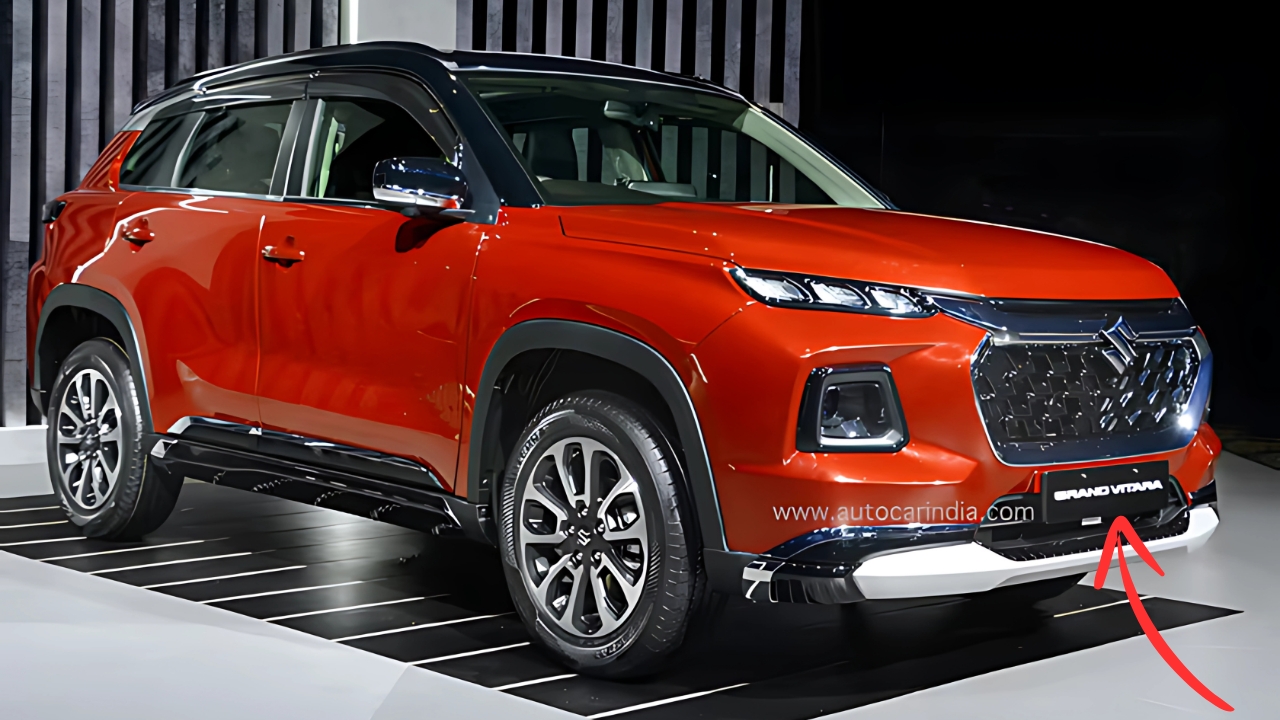Maruti grand vitara: The Maruti Suzuki Grand Vitara represents a significant milestone in the evolution of the Indian automotive market, marking the manufacturer’s ambitious foray into the highly competitive mid-size SUV segment.
As a product of the strategic partnership between Suzuki and Toyota, this vehicle combines Japanese engineering heritage with specific adaptations for Indian driving conditions and consumer preferences.
The Grand Vitara demonstrates how thoughtful localization and technology integration can create a compelling offering that balances global standards with regional requirements.
Maruti grand vitara: Design Philosophy and Exterior Aesthetics
The Grand Vitara’s exterior design establishes a distinctive visual identity that differentiates it from both its competitors and other Maruti Suzuki offerings.
The front fascia features a bold hexagonal grille flanked by split LED headlamp units, creating a contemporary appearance while maintaining brand recognition.
The pronounced wheel arches and squared-off proportions convey a robust stance appropriate for the SUV category, while character lines along the profile reduce visual mass and create dynamic surface interactions.
Available in nine color variants including dual-tone options, the exterior finish provides meaningful personalization without excessive manufacturing complexity.
Dimension-wise, the vehicle measures approximately 4,345mm in length, 1,795mm in width, and 1,645mm in height, with a wheelbase of 2,600mm.
These proportions position it squarely in the mid-size SUV segment, offering substantial presence without becoming unwieldy in urban environments.
The alloy wheel designs (16-inch for lower variants, 17-inch for higher trims) feature geometric patterns that complement the overall design language while providing practical benefits in terms of brake cooling and structural integrity.
The integrated roof rails, while primarily aesthetic, offer functional utility for adventure-oriented owners requiring additional cargo capacity.
Interior Craftsmanship and Comfort
The cabin design prioritizes ergonomics and material quality, addressing historical criticisms of Maruti Suzuki products in this regard.
The layered dashboard incorporates soft-touch materials in primary contact areas, complemented by piano black accents and brushed aluminum-finish trim elements that elevate the perceived quality.
The leather-wrapped steering wheel and ventilated front seats in higher variants further enhance the premium experience.
The seating arrangement accommodates five adults with reasonable comfort, supported by thoughtful ergonomic sculpting that provides adequate thigh support and lumbar reinforcement.
Rear passengers benefit from reclinable seatbacks and dedicated air conditioning vents, addressing the climatic challenges of the Indian summer.
The panoramic sunroof—a first for Maruti Suzuki in India—enhances spatial perception while responding to growing consumer demand for this feature.
Storage solutions demonstrate practical consideration, with a 373-liter boot capacity expanding to 1,150 liters with rear seats folded.
Multiple storage compartments throughout the cabin accommodate everyday items, including adequately sized door pockets capable of holding 1-liter bottles.
Powertrain Options and Performance
The Grand Vitara offers a diverse powertrain lineup that reflects evolving market preferences while acknowledging practical infrastructure limitations.
The conventional 1.5-liter K-series naturally aspirated petrol engine produces 103 horsepower and 137 Nm of torque, paired with either a 5-speed manual or 6-speed automatic transmission.
This familiar powertrain delivers reliable performance and established serviceability across Maruti’s extensive dealer network.
More significantly, the Grand Vitara introduces Maruti’s first strong hybrid system to the Indian market. This Toyota-derived powertrain combines a 1.5-liter engine with an electric motor to deliver a combined 115 horsepower.
The system automatically transitions between pure electric, hybrid, and engine-only propulsion depending on driving conditions, optimizing efficiency without requiring driver intervention.
The e-CVT transmission provides seamless power delivery while eliminating the hunting behavior sometimes associated with conventional CVTs.
For adventure-oriented customers, the AllGrip Select all-wheel-drive system (available with the mild hybrid variant) offers genuine off-road capability through selectable driving modes—Auto, Sport, Snow, and Lock—that modify torque distribution, traction control parameters, and throttle response according to terrain requirements.
Technology Integration
The technology package centers around a 9-inch touchscreen infotainment system featuring wireless Apple CarPlay and Android Auto connectivity.
The interface design prioritizes legibility and straightforward operation, with physical shortcut buttons complementing touch inputs for critical functions.
The six-speaker audio system delivers respectable sound quality, with adequate power handling for Indian music preferences that often favor pronounced bass response.
The driver-facing 7-inch digital instrument cluster provides customizable information displays, including hybrid system operation, energy flow visualization, and driving efficiency metrics.
The head-up display projects essential information directly into the driver’s line of sight, reducing visual distraction during high-speed highway travel.
Connected car technology through Suzuki Connect offers over 40 features including geofencing, vehicle tracking, driving behavior analysis, and remote climate control operation—particularly valuable for pre-cooling the cabin during summer months.
The integration of Amazon Alexa remote commands represents thoughtful adaptation to evolving consumer interaction preferences.
Safety Systems and Structural Integrity
Safety features demonstrate meaningful progress beyond regulatory requirements, with six airbags, electronic stability control, hill hold assist, and a 360-degree camera system available on higher variants.
The adoption of a global platform architecture ensures compliance with more stringent crash test protocols, while high-strength steel usage in critical structural areas enhances occupant protection without excessive weight penalties.
The autonomous emergency braking system and lane departure warning represent Maruti’s initial foray into advanced driver assistance systems, though their calibration acknowledges the unique challenges of Indian traffic conditions where excessive intervention could create hazards rather than mitigate them.
Efficiency and Environmental Considerations
Fuel efficiency—a traditional Maruti Suzuki strength—remains impressive across the powertrain range. The strong hybrid variant delivers particularly noteworthy economy, with certified figures approaching 27.97 km/l under standardized testing.
Real-world performance consistently exceeds 20 km/l in mixed driving conditions, representing significant operational cost advantages in a market highly sensitive to fuel prices.
The mild hybrid system, while less sophisticated, still contributes meaningful efficiency improvements through engine stop-start functionality and regenerative braking.
These technologies deliver approximately 10% improvement over comparable non-hybrid powertrains, providing environmental benefits without excessive technical complexity.
Maruti grand vitara:
The Maruti Suzuki Grand Vitara represents a significant evolution for both the manufacturer and the Indian automotive market.
By successfully integrating advanced hybrid technology, thoughtful design elements, and practical adaptations for local conditions, Maruti has created a compelling proposition that balances aspiration with accessibility.
While competing in a segment dominated by established players, the Grand Vitara leverages Maruti’s unparalleled service network and brand trust while introducing technologies previously unavailable at this price point.
This combination addresses the increasingly sophisticated demands of Indian consumers who seek global features and environmental responsibility without sacrificing practicality or value.
As the automotive landscape continues evolving toward electrification, the Grand Vitara’s hybrid systems provide a pragmatic transition technology appropriate for markets where charging infrastructure remains developing.
This approach demonstrates how thoughtful technology adaptation, rather than wholesale importation of global solutions, can effectively address regional requirements while maintaining forward progress.

